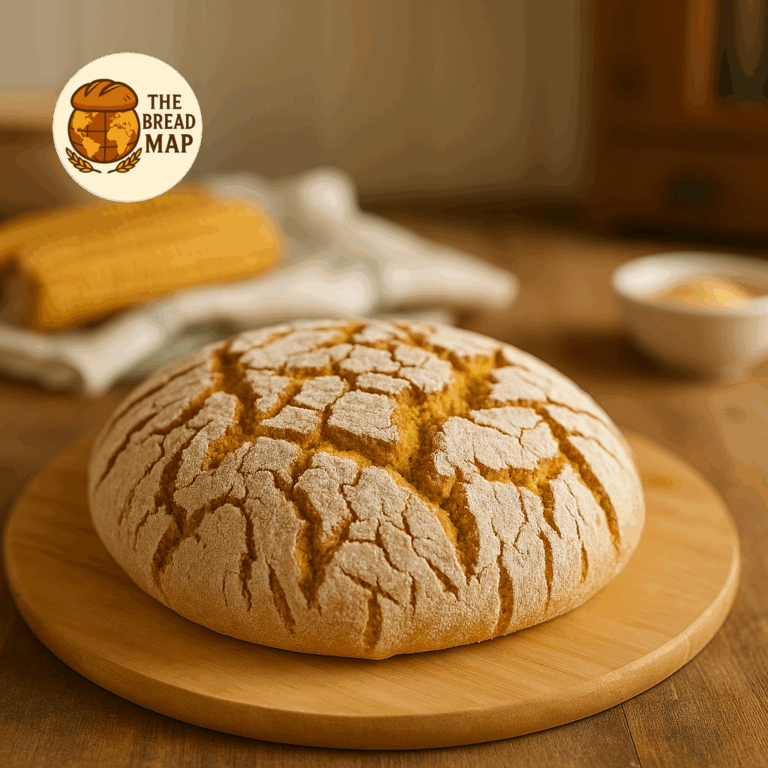
Broa de Milho is more than a humble loaf of cornbread — it’s a symbol of resilience, heritage, and flavor deeply rooted in Portuguese rural life. With its golden, earthy interior and firm, rustic crust, this bread has long earned its place on the Portuguese table, especially next to steaming bowls of caldo verde or robust meat stews. If you’ve ever been to a family home in northern Portugal, you’ve likely broken pieces of Broa by hand, its craggly top dusted with flour, as the scent of simmering vegetables and broth filled the air.
Historical Background
The story of Broa de Milho begins in the fields. Introduced to Europe in the 16th century from the Americas, corn became a vital crop in Portugal’s northern and central regions, especially where wheat was harder to grow. Villagers blended cornmeal with rye or wheat flour to create something nourishing, accessible, and satisfying — a practical evolution during centuries of agricultural scarcity. Traditionally baked in stone or wood-fired ovens, Broa was a slow food long before the term existed — developing deep flavor through fermentation and carrying the warmth of family kitchens in every slice.
Region of Origin
While Broa de Milho can be found throughout Portugal, it’s especially beloved in the northern Minho region. Characterized by misty hills, granite villages, and fertile soil, Minho is a cradle of Portuguese culinary identity. The bread is often homemade in rural communities, where locals stick to tradition not out of nostalgia, but because it works. Each village has its own slight twist — adding more rye here, letting it ferment longer there — but all remain close to the humble core of what Broa means: rustic, sustaining, and real.
Ingredients and Preparation
Broa de Milho is built on simplicity, but that doesn’t mean it’s easy. The beauty lies in craftsmanship and patience. A basic traditional Broa might include:
- Yellow cornmeal (the coarse kind, for texture)
- Rye or wheat flour
- Warm water
- Salt
- Yeast or a natural sourdough starter
The flours are mixed and kneaded with warm water to activate the yeast or starter. The dough, often sticky and heavy, is left to rise slowly — imparting its tangy aroma. Once shaped, the loaf is traditionally dusted in flour and baked directly on hot masonry or a baking stone, creating that signature cracked crust. While modern ovens can replicate the process, nothing quite mimics the depth achieved by a centuries-old Portuguese forno (bread oven).
Cultural Importance
Today, Broa de Milho is still made at home, sold in village markets, and served in rustic restaurants. It plays a supporting role to hearty Portuguese dishes and soups, particularly caldo verde — a simple kale-and-potato soup where the robust texture of Broa is essential for dipping. Its density and warmth have come to represent more than sustenance; they evoke a way of life rooted in rhythm, resourcefulness, and community.
Whether enjoyed warm with olive oil or toasted the next day, Broa connects past to present. It’s not flashy. It doesn’t pretend. And yet, it’s unforgettable — the kind of bread that turns a bowl of soup into a sacred ritual and brings generations to the table.
Leave a Reply